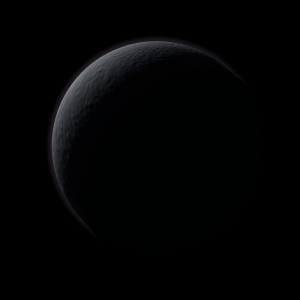|
|
Space Astro
|
Info for exoplanet "Suba Joe"
| Scientific (actual) data |
|---|
| Planet | HATS-48A b |
| Planet status | Confirmed |
| Planet mass | 0.243 |
| Radius | 0.8 |
| Orbital period | 3.13167 |
| Semi major axis | 0.03769 |
| Orbit eccentricity | 0.162 |
| Inclination | 89.58 |
| Discovered | 2020 |
| Updated | 2020-02-17 |
| Tzero tr | 2457100 |
| Impact parameter | 0.083 |
| K | 41.8 |
| Temperature (kelvin) | 954.6 |
| Publication | Published in a refereed paper |
| Detection type | Primary Transit |
| Mass detection type | Spectrum |
| Radius detection type | Primary Transit |
| Star name | HATS-48A |
| Right ascension | 288.67° |
| Declination | -59.58° |
| Mag v | 14.3 |
| Star distance | 265.4 |
| Star metallicity | 0.186 |
| Star mass | 0.7279 |
| Star radius | 0.7152 |
| Star age | 11.97 |
| Star temperature | 4546 |
| Wikipedia article | HATS-48A b |
Back
| |
| Fictional info (?) |
|---|
| Suggested name | Suba Joe |
| Planet type | Hot gas giant |
| It has the longest rotation period (445 days) of any planet in its solar system and rotates in the opposite direction to most other planets.
This hot gas giant is named after the deity Suba Joe, the messenger of the sea.
An observer on Suba Joe would therefore see only one summer every four years.
Suba Joe is the site of Titanic Gravis, the biggest volcano and second-highest known mountain in its solar system, and of Valles Marineris, one of the largest canyons in its solar system. |
| Atmosphere | Nitrogen | 55% |
| Helium | 40% |
| Hydrogen | 4.1% |
| Hydrogen peroxide | 0.041% |
| Atmospheric pressure | 0.16 bar |
 |
| No known satellites |
| Google search for Suba joe |
|
Website by Joachim Michaelis
|
|
|
|